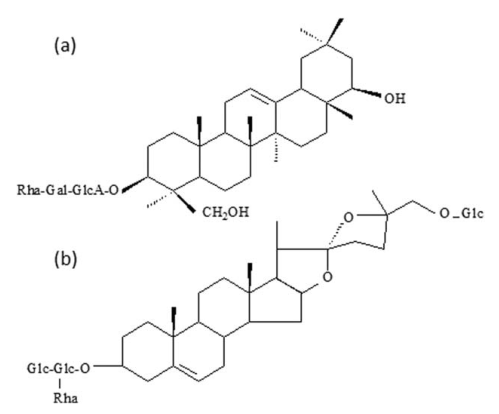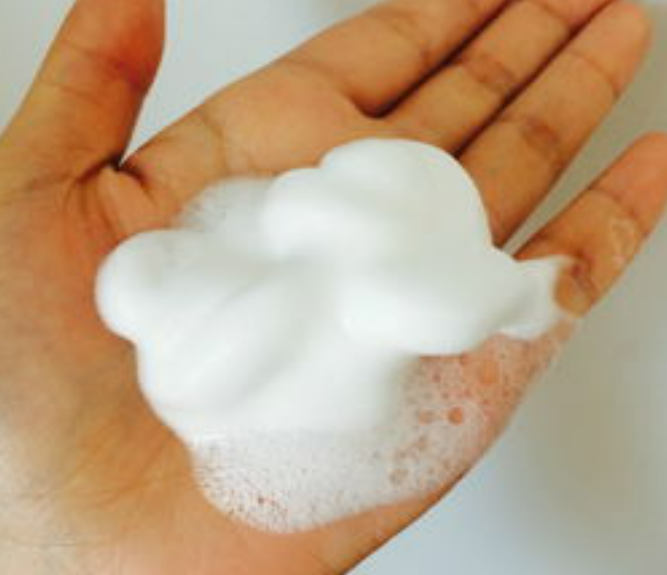Surfactant Properties Of Plant-Derived Saponins
Plants synthesize an almost unlimited number of chemicals that serve their ecological functions, including defence against herbivores and disease. The main chemical compounds of these plants include saponins, sterols, terpenes, triterpenoid saponins, steroids and pyrazolones (Hostettmann and Marston 1995). For example, saponins, are natural compounds found in a large number of botanicals and are also an important component of the human diet, which exhibit a variety of biological activities and represent a significant resource for drug and agrochemical discovery.
Several species in China are rich sources of plant-derived saponins, including Mussaenda pubescens (Rubiaceae), Bupleurum chinense, Clinopodium chinense var. parviflorum and Clematis chinensis Osbeck (Ranunculaceae). Yucca Schidigera (Agavaceae family) is also known to contain saponins that have antiviral, diuretic, hypocholesterolemic and immunomodulatory activity. They have been used for thousands of years in traditional medicine. They are highly biodegradable and are also regarded as eco-friendly because they are naturally produced by plants, are not harmful to the environment and have no side effects on human health.
These chemicals exhibit various physico-chemical properties such as surface activity, micellization, foaming, detergency, wetting, emulsification, dispersion and water binding. Some are also reported to have a wide range of useful biological activities, such as anti-inflammatory, antimicrobial, antifungal, antioxidant, anticancer, cholesterol-lowering and hemolytic activities.
The physicochemical and biological properties of plant-derived saponins are diverse. The physicochemical properties of saponins are dependent on the molecule’s structure and the nature of the aglycone. Hence, the synthesis of these compounds requires knowledge of their structural components, as well as the mode of attachment to the aglycone and the type of glycosylation. Among these active compounds are saponins, which are a large family of amphiphilic glycosides containing a triterpene or sterol backbone backed by a hydrophilic carbohydrate chain. The most common sugars in saponins are D-glucose, D-galactose, D-glucuronic acid, D-galacturonic acid, L-arabinose, D-xylose, and D-fructose. Saponins can be classified as monosaccharide, disaccharide, or triosaccharide, depending on the number of sugar chains in their structure. Monosaccharide has a sugar chain in the aglycone, usually linked to C-3. Diosaccharide saponins have two sugar chains with an ether bond at C-3, an ester bond for C-28 (triterpenoid aglycones) or an ether bond for C-3 (furostenol aglycones). The nature of aglycones and the way different sugar chains and bonds are connected result in a variety of compounds. In addition, different parts of the plant can contain saponins with different structures. The majority of saponins, including avenacins, soyasaponins and yuccasaponins, are triterpenoid glycoalkaloids (Hostettmann and Marston 1995). Their backbones are composed of a cyclic oleane triterpene or sterol structure that is glycosylated with a sugar moiety at the C-3 position.
Reduce surface tension
Plant-extracted saponins have a strong effect on reducing surface tension. It is transparent after dissolution in water, high hydrophilicity, and the effect of sucrose fatty acid ester and glyceride used in food is equal to or above the HLB. Badi and Khan used acacia, Sapindus mukorosi, Phyllanthusemblica, sour dates (Ziziphus spina christi) and Fructus aurantii (Citrus) aurantifolia extracts were used to prepare herbal shampoos and the hair condition of 20 volunteers was assessed. The results showed that the herbal shampoo also proved to be effective in cleaning and decontamination, showing low surface tension, small bubbles and good foam stability after 5 minutes.
Foaming Properties
Plant-derived saponins are their surfactant activity which is the reason why these compounds are also known as soaps. They are an excellent source of surfactants as they can significantly reduce surface tension and increase the foamability of aqueous solutions. The surfactant properties of plant-derived saponins include foaming, emulsifying and detergent abilities. These properties are important in industrial applications such as soap production and food and pharmaceutical formulations. Upon aqueous agitation, these compounds produce stable foams. This property has been attributed to their highly polar sugar moieties and their non-polar triterpene or sterol backbones. The surfactant properties of saponins are attributed to the amphiphilic structure of these molecules, composed of lipophilic non-polar aglycones and hydrophilic polar glycone moieties.
High viscoelasticity, solubility and rapid adsorption are beneficial to stable foam formation. Saponins with triterpene structure are more likely to form viscoelastic films and thus produce stable foams and emulsions. We compared the foaming properties of saponin extracts from different plant sources (saponin, Astragalus, camellia seed, chestnut tree, Tribulus terrestris and Glycyrrhiza officinalis), and found that the foam of saponins from the single chain (Abel camellia and Aesculus) and double chain (saponin and Glycyrrhiza officinalis) was denser and more stable than that from glycyrrhiza officinalis. Therefore, it is concluded that the high viscoelasticity and shear of saponin film at the air-water interface lead to higher foam properties and stability, while the foam from glycyrrhizin extract is unstable due to the presence of a few sugar residues in the saponin and the few intermolecular hydrogen bonds between these residues, which makes the saponin solubility poor and weakens the interface network. Tribulus tribulus saponins have poor interfacial viscoelasticity, resulting in little foam formation. The crude saponin extract (0.5%) solution of camellia had good foam stability (86.0%) after 5 minutes, which was comparable to that achieved by sodium lauryl sulfate (93.6%). The saponin solution can reduce the surface tension of water from 72mN/m to 50 mN/m and show wettability.
Emulsifying property
Phytosaponins have good emulsifying stability, which is the same as sucrose fatty acid ester and polyglycerol fatty acid ester, especially when used in spices. Its foaming and emulsifying properties make it widely used in medicine and some cosmetics as additives.
Brahimet et al. studied crude saponins extracts from plant species Paronychia argentea and Spergularia marginata and found that saponins had significant antioxidant and antibacterial activities. Due to their non-toxicity, they can be added at higher concentrations than traditional synthetic antioxidants. The bioactive properties of saponins are ascribed to their amphipathic ability to penetrate membranes, complex with sterols and cause pore formation (Roddick 1979; Roddick and Drysdale 1984). While this is believed to be the main mechanism of action, many saponins have additional effects on cellular processes such as enzyme activity, transport, organelle integrity, redox-related functions and signal transduction. Other properties commonly ascribed to the group include hemolytic activity on red blood cells, cholesterol-binding ability and bitterness. These properties may be beneficial or harmful depending on the plant species and the chemical nature of the saponins.




